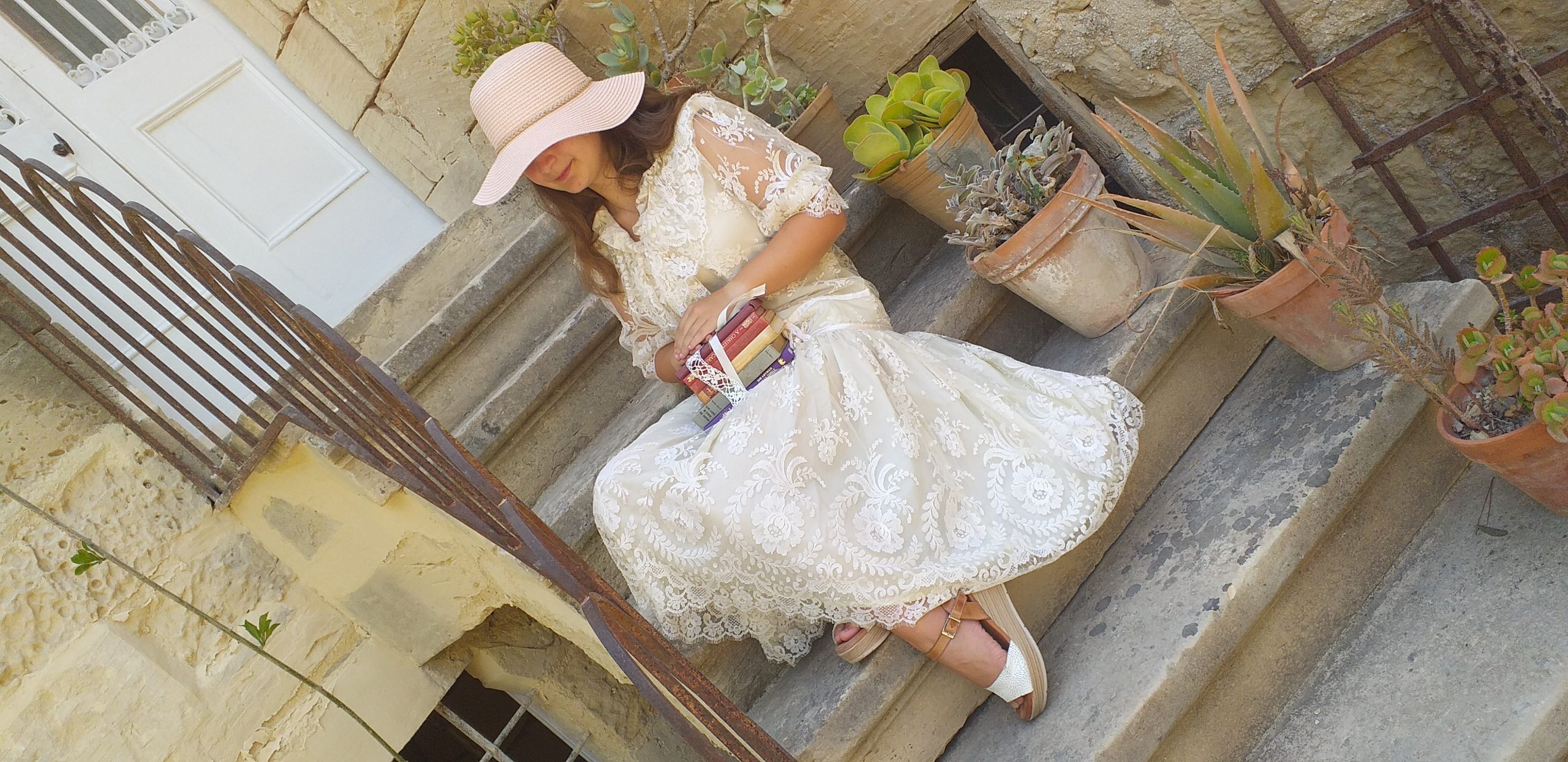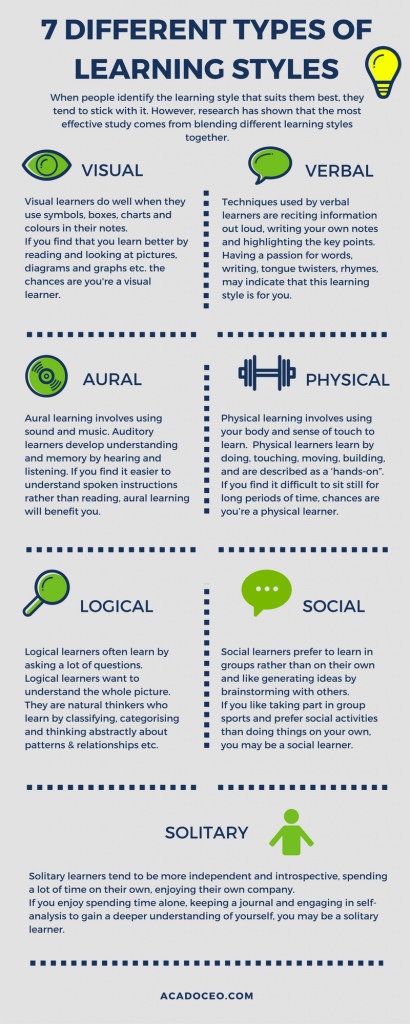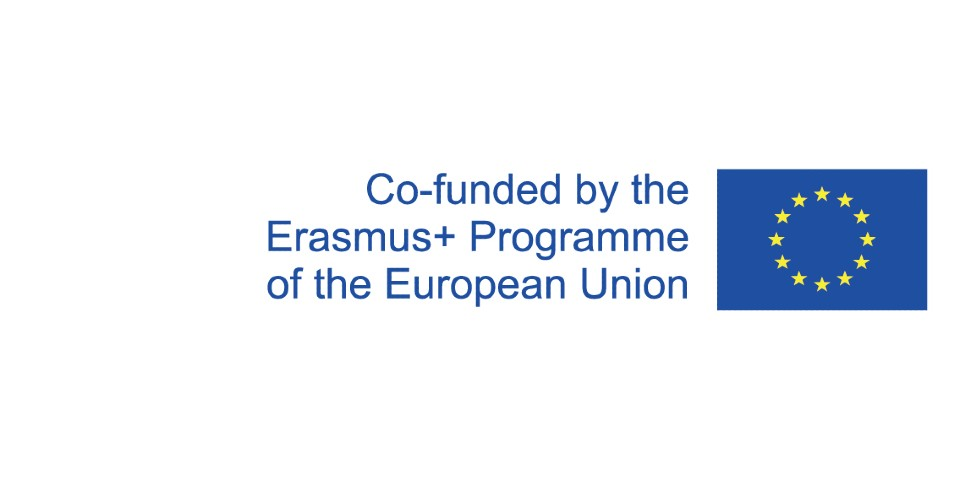There is research which shows that learning styles are a neuro-myth. However, we would still like to propose that learners might have different approaches to learning, storing and recalling information so we are going to explore some ways for you to explore. Here below is a power point presentation by Simona Boccanegra from Dis…correre about the ways that people learn. See which one counts for you or even … maybe … a combination of more than one for different subjects. SCROLL below for more information about this!
Characteristics of different ways of learning:
A visual learner :
- Likes actions to be repeated
- Watches speakers’ facial expressions and body language
- Likes to take notes to review later
- Remembers best by writing things down several times or drawing pictures and diagrams
- Good speller
- Turns the radio or T.V. up really loud
- Remembers things best when written out or diagrammed (eg. using flowcharts and mindmaps)
- Prefers information to be presented visually, (e.g. flip charts or chalk board)
- Skillful at making graphs, charts, and other visual displays
- Can understand and follow directions on maps
- Feels the best way to remember something is to picture it in their head
- Follows written instructions better than oral ones
- Good at solving jigsaw puzzles
- Gets the words to songs wrong
- Good at visual arts
An Auditory Learner learns best when information is presented auditory in an oral language format. They enjoy participating in classroom discussions. They benefit from lectures, audio tapes and other forms of verbal instruction.
- Follows spoken directions better than written ones
- Would rather listen to a lecture than read the material in a textbook
- Understands better when reads aloud
- Likes words (puns, plays on words, rhymes)
- Prefers to listen to the radio than to read a newspaper
- Frequently sings, hums or whistles to themselves.
- Dislikes reading from a computer screen
- When presented with two similar sounds, can tell if sounds are the same or different
- Requires extra explanations of diagrams, graphs, or maps
- Enjoys talking to others
- Talks to self
- Can repeat whole conversations, sometimes even with inflections
- Would rather listen to music than view a piece of art work
- Uses finger as a pointer when reading
- Likes to tell jokes, stories and makes verbal analogies
A tactile or kinesthetic learner:
- Reaches out to touch things
- Collects things
- Talks using hands to communicate what they want to say
- Frequently fidgeting (e.g. tapping pen, playing with keys in pocket)
- Coordinated, good at sports, dance, etc.
- Takes things apart, puts things together
- Prefers to stand while working
- Likes to have music in the background while working
- Enjoys working with hands and making things
- Likes to chew gum or eat in class
- Learns through movement and exploring the environment around them
- May be considered hyperactive
- Good at finding their way around
- Can relate all the plot details and action of a story but not much about how things looked or sounded
- Prefers to do things rather than watch a demonstration or read about
Click on the image below to find out more about learning styles! We hope you enjoy this page! 🙂



